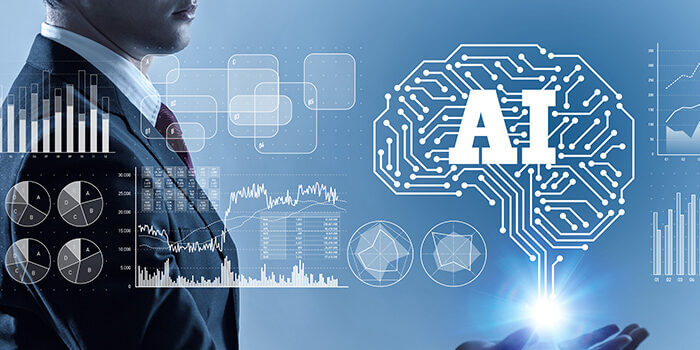Signals from the financial market don’t paint an optimistic picture for the near term.
As businesses face the realities of working through an uncertain economy, they’ll likely be looking to efficiency and productivity enabling automation technologies such as Robotic Process Automation (RPA). These technologies will enable them to automate manual process at scale, deploy workers to top priority needs, and concentrate more on strategic approaches that will assist them through the ups and downs of today’s economic climate.
What is RPA and Why Should I Care?
Robotic Process Automation refers to software that can be easily programmed to do typically basic (and advanced in certain cases), repetitive, rules-based tasks across applications.
RPA offers an alternative to traditional IT integration. It uses a machine-based automation technology (bot) that possesses data entry, interchange, and manipulation between applications, humans, and processes. RPA does this by mimicking human interactions with web applications, desktop applications, web sites, portals, Excel worksheets, legacy green-screen apps, etc.
The use of automation technologies continues to grow. The global robotic process automation (RPA) market is forecast to grow to more than $13 billion dollars by 2030, a massive increase over the $5.6 billion spent in 2023.
Key Benefits of RPA
- Increase productivity by up to 200% in certain processes, leading to faster turnaround times and increased output, according to research by McKinsey & Company
- Supports redeployment of resources to higher value functions; 93% of RPAs do not replace humans
- Cuts down on errors and reduces the risk of non-compliance
- Enables consistent performance and increases productivity
- Anyone can use it — advanced technology will allow business users, IT workers, and developers to use drag-and-drop functionality to automate processes I
- Allows organizations to scale operations more efficiently without significant increases in labor costs. According to Gartner, organizations can achieve a 10% to 25% increase in scalability through RPA implementation.
- Automates repetitive and time-consuming tasks, freeing up employees to focus on higher-value activities. Research by Forrester indicates that RPA can save employees up to 40% of their time on routine tasks.
Enjoying this insight?
Sign up for our newsletter to receive data-driven insights right to your inbox on a monthly basis.
Types of Robotic Process Automation
RPA has evolved with time. All types of RPA promote cost savings, increased performance, and error reduction. Modern technology plays an important role in the evolution of RPA, from cloud auto-scaling and load balancing, to using AI for automating judgments in tasks.
Assisted RPA
The most common type of RPA is Assisted RPA. This is when automation can perform tasks and activities on a person’s desktop, laptop, etc. A perfect example of this would be recording a function on RPA software to perform a calculation, query, even cut and paste on-demand. The user would playback the function as needed to simplify routines and increase productivity.
This type of RPA is also referred to as RPA 1.0 and is practical only when users have the ability to invoke the RPA themselves on-demand. Although assisted RPA will improve user performance, it is not typically practiced at enterprise scale.
Unassisted RPA
Automation that can run without users and can run at any time (on a schedule) is called Unassisted RPA. In this type of RPA, referred to as RPA 2.0, the RPA software is deployed on one to multiple servers for scale. It does not require user interaction and is used to automate an end-to-end business or IT process. Dashboards are commonly used to orchestrate tasks and monitor performance. The development of this RPA requires precision, keeping in mind there is no human interaction throughout this process.
Intelligent Automation
Intelligent Automation is a business-driven approach to rapidly identify, vet, and automate as many business and IT processes as possible. It combines RPA with a range of complementary technologies, such as artificial intelligence (AI), machine learning (ML), natural language processing (NLP), process mining, and analytics. It leverages advanced technologies to mine data, process structured or unstructured data, and analyze text to identify automation candidates. Intelligent Automation also extends beyond traditional RPA to automate end-to-end business processes from simple tasks.
Cognitive Automation
Cognitive Automation is used within Intelligent Automation efforts and integrates artificial intelligence and machine learning, enabling the software bots to understand, interpret, and act on unstructured data sources, such as emails, documents, and images. It simulates human learning to grasp knowledge from a dataset, recognize patterns, and make judgments. Cognitive Automation can be used to automate a wide range of enterprise tasks, from routine processes to complex data analysis and can lead to greater productivity, faster turnaround times, and improved customer experiences.
Determining the Best Candidate for Automation

Traditional RPA vs Intelligent Automation vs Cognitive Automation
Traditional RPA
Traditional RPA supports automation based on structured data and is limited to automating simple, repetitive tasks.
Some typical use cases associated with Traditional RPA include:
- Swivel chair process for data exchange between systems and processes, especially pre-API legacy applications requiring greenscreen (or other dated interface) user interactions
- Standardizing data across disparate systems / processes: data cleansing, association, and manipulation
- Quality Control checks – validating data meets known criteria prior to proceeding to the next step of a key organizational process
- Text analytics / document tagging to digitized formats or document processing
Intelligent Automation
Intelligent automation aims to automate not only repetitive tasks but also knowledge work and decision-making processes that involve unstructured data and human judgment.
Some typical use cases associated with Intelligent Automation include:
- Expense report submission, approval routing, reimbursement processing, and reporting.
- Invoice validation, line-item verification, and cross-check against existing records to identify discrepancies
- Transaction monitoring and suspicious activity flagging
Cognitive Automation
Cognitive Automation takes things a step further by enabling bots to perform tasks that previously required human intervention, such as data extraction, document classification, sentiment analysis, and decision-making based on contextual information.
Some typical use cases associated with Cognitive Automation include:
- Analyzing customer feedback, social media posts, and online reviews to understand sentiment and gauge customer satisfaction.
- Implementing chatbots and virtual assistants to automate customer support, sales inquiries, and internal service desk requests.
- Detecting fraudulent activities, such as payment fraud, identity theft, and account takeovers, in real-time.
As you can see, automation is quickly becoming a game changer for those organizations taking advantage of the efficiencies and productivity gains that can be achieved by leveraging this still emerging technology. By leveraging automation, you can help to recession-proof your organization by scaling operational efficiencies and streamlining cash flows.
To learn more about how this technology can benefit your organization, contact us to speak to an expert today.

Regina Rider is a Director of Client Success with more than 20 years of experience leading operational and technical teams to deliver transformative solutions for clients in the communications, manufacturing, and financial industries.






